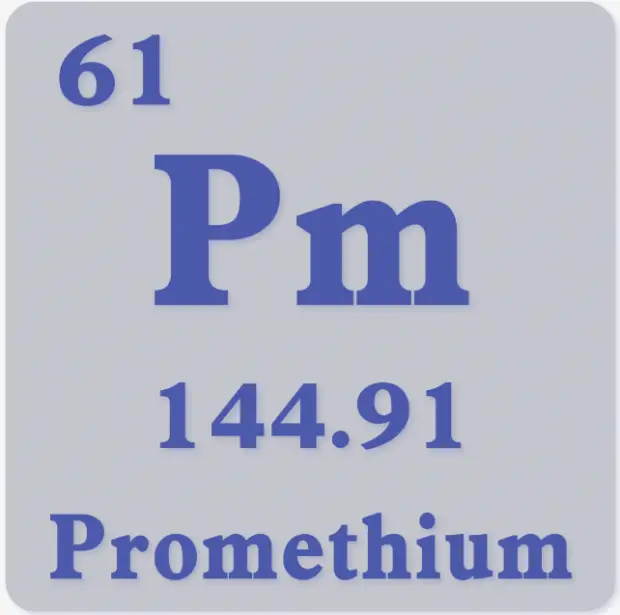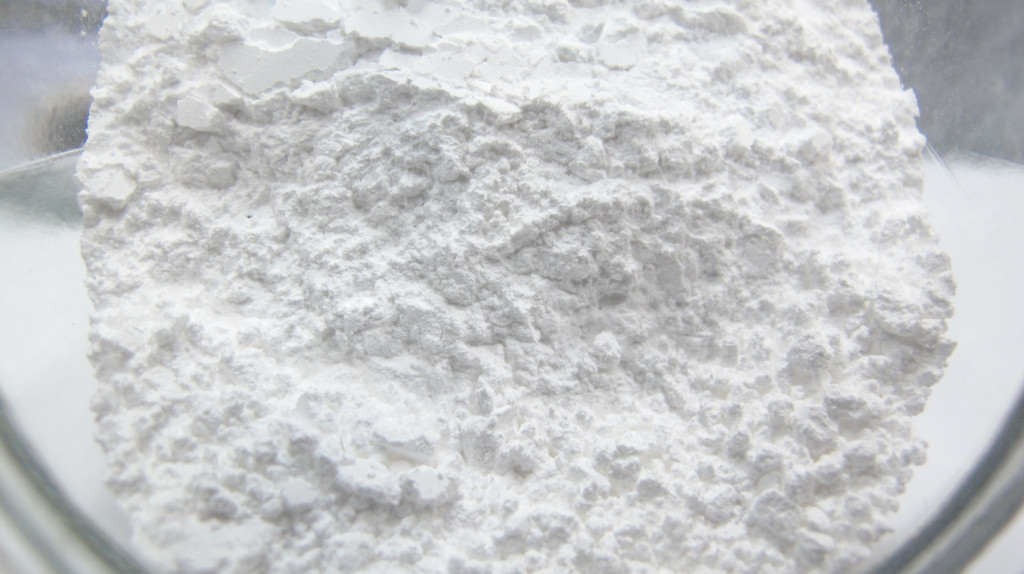Table of Contents
Introduction
Promethium (Pm) is element number 61 in the periodic table, a rare, radioactive element.
Promethium is artificially synthesized and cannot be directly found in nature. Its radioactivity and rarity make its study and acquisition challenging.
In the 1930s, chemists produced some unstable radioactive elements through nuclear reactions. In 1945, scientists Charles D. Coryell and Jacob A. Marinsky successfully isolated promethium at Oak Ridge National Laboratory in the U.S. They used neutron capture to separate it from rare earth elements.
This element was named after “Prometheus” from Greek mythology, the fire-bringer, symbolizing its radioactive nature.
Promethium (Pm)
Atomic number: 61
Atomic weight: 145 u
Atomic structure: The outermost electronic structure of promethium is 4f5 6s2。
Physical/chemical properties: Promethium is a transition metal with good electrical conductivity and corrosion resistance. It appears silver-white and is relatively soft. Like many other metals, it has good ductility and malleability.
In chemical reactions, promethium shows high stability and resistance to oxygen and most acids, making it valuable in jewelry manufacturing, electronics, and as a chemical catalyst.
Main Application Areas of Promethium
- Nuclear battery: By sandwiching a small radioactive source of cadmium between two semiconductor plates, the beta particles emitted by cadmium-147 can be converted into an electric current. The service life of this battery is approximately 5 years.
- Electronics industry: Promethium is essential in electronic devices, especially in capacitors, connectors, and circuit boards. Its good conductivity and corrosion resistance make it ideal for electronic components.
- Catalyst: Promethium is widely used as a chemical catalyst, participating in many industrial processes such as organic synthesis and wastewater treatment. Its surface activity makes it crucial in accelerating chemical reactions.
- Medical applications: Promethium has certain applications in the medical field, including use in specific imaging techniques and treatments.
- Scientific research: Due to its unique radioactivity, promethium is employed in nuclear physics to explore atomic nucleus structures and properties.
In the microscopic world of elements, promethium exhibits fascinating characteristics and versatile applications. Whether shining in jewelry or quietly aiding the tech industry, promethium is a noteworthy element. Understanding its properties and uses helps us appreciate the essential role this tiny yet impactful element plays in shaping our world.


